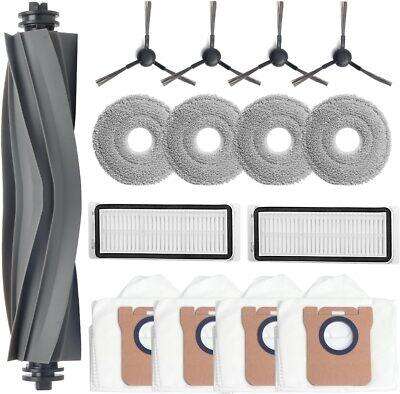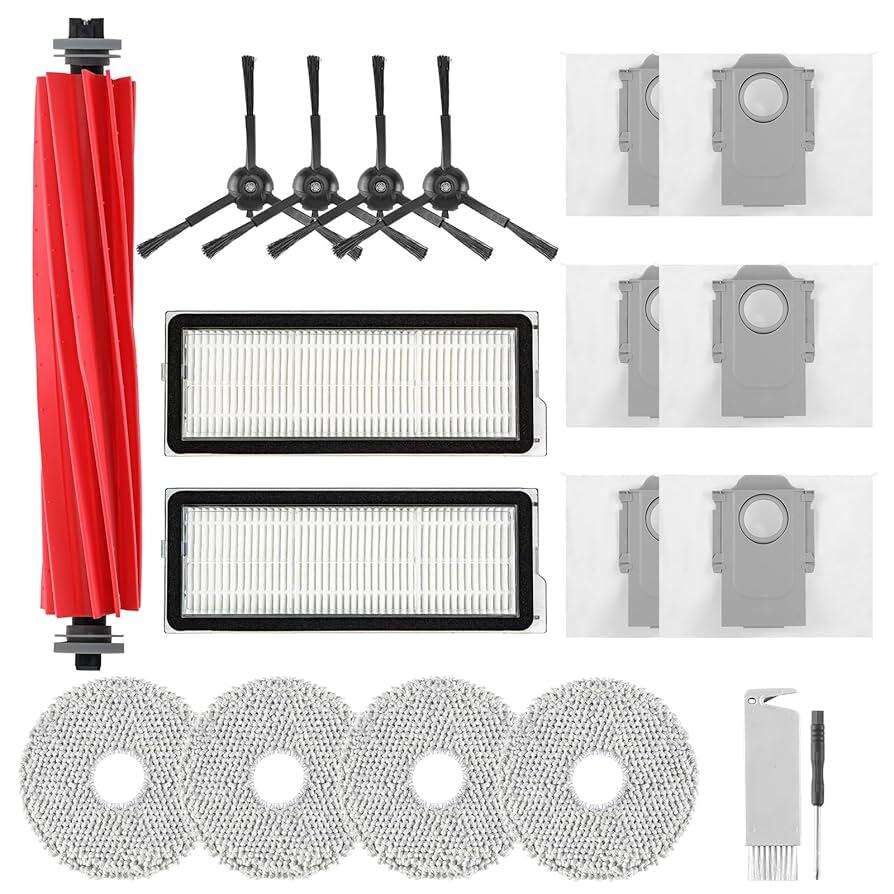Maximizing Retail Success with Strategic Vacuum Parts Distribution
The vacuum cleaner aftermarket presents a significant opportunity for distributors looking to expand their product portfolio. As consumer demand for vacuum replacement parts continues to grow, selecting the right inventory mix becomes crucial for retail success. This comprehensive guide explores proven strategies for distributors to build a profitable vacuum parts business while meeting retailer and end-user needs.
Understanding the Vacuum Parts Market Landscape
Current Market Dynamics and Growth Trends
The vacuum replacement parts market has experienced steady growth, driven by consumers' increasing preference for repairing rather than replacing their cleaning equipment. This shift is particularly evident in the premium vacuum segment, where original equipment costs justify investment in quality replacement components. Market research indicates that the global vacuum parts industry is expected to reach $4.2 billion by 2025, presenting substantial opportunities for strategic distributors.
Environmental consciousness and sustainability initiatives have further accelerated market growth, as consumers actively seek ways to extend their vacuum cleaners' lifespan. This trend aligns perfectly with the replacement parts business model, creating a sustainable revenue stream for distributors who can effectively serve this market.
Consumer Behavior and Purchasing Patterns
Understanding consumer purchasing behavior is essential for successful vacuum replacement parts distribution. Research shows that consumers typically search for replacement parts when their vacuum loses suction, makes unusual noises, or stops functioning correctly. They prioritize availability, compatibility, and price when making purchasing decisions.
Most consumers research vacuum replacement parts online before making a purchase, either through e-commerce platforms or local retailer websites. This hybrid shopping approach requires distributors to maintain both digital presence and physical retail partnerships to maximize market coverage.
Essential Criteria for Part Selection
Quality and Compatibility Standards
When selecting vacuum replacement parts for retail distribution, quality must be the foremost consideration. High-quality parts not only ensure customer satisfaction but also minimize returns and warranty claims. Distributors should establish strict quality control measures and partner with manufacturers who maintain consistent production standards.
Compatibility across multiple vacuum brands and models increases inventory efficiency and market reach. Smart distributors focus on universal vacuum replacement parts that fit multiple machines while maintaining a strategic selection of brand-specific components for popular models.
Inventory Management and Demand Forecasting
Successful distribution requires sophisticated inventory management systems that track sales patterns and predict demand cycles. Historical data analysis helps identify seasonal trends and high-turnover vacuum replacement parts, enabling distributors to optimize stock levels and reduce carrying costs.
Implementation of modern inventory management software allows distributors to maintain optimal stock levels while providing real-time availability information to retail partners. This technology integration helps prevent stockouts while minimizing excess inventory.
Building Strong Retail Partnerships
Retailer Support Programs
Developing comprehensive support programs for retail partners is crucial for long-term success in the vacuum replacement parts market. This includes providing detailed product information, staff training materials, and marketing support. Successful distributors often create digital catalogs and cross-reference guides to help retail staff quickly identify the correct replacement parts.
Regular communication with retail partners helps identify market trends and address concerns promptly. Establishing feedback channels ensures continuous improvement in product selection and service delivery.
Marketing and Merchandising Strategies
Effective merchandising strategies help retail partners maximize sales of vacuum replacement parts. This includes creating attractive packaging, developing point-of-sale materials, and designing user-friendly display systems. Clear labeling and organized presentation make it easier for customers to find the parts they need.
Digital marketing support, including website content and social media materials, helps retailers promote vacuum replacement parts effectively. Providing seasonal promotional materials and special offer templates can drive additional sales through retail channels.

Future-Proofing Your Distribution Strategy
Emerging Technologies and Market Trends
The vacuum cleaning industry continues to evolve with new technologies and features. Distributors must stay informed about emerging trends and adjust their product selection accordingly. This includes parts for robotic vacuums, smart cleaning systems, and eco-friendly models.
Investment in digital infrastructure ensures distributors can meet changing market demands. E-commerce integration, mobile apps, and automated ordering systems help streamline the distribution process and improve service delivery.
Sustainability and Environmental Considerations
Environmental consciousness influences both product selection and packaging decisions. Distributors should prioritize vacuum replacement parts that support sustainable practices, including recyclable materials and energy-efficient components. Eco-friendly packaging and shipping methods demonstrate environmental responsibility while meeting consumer expectations.
Developing a sustainability strategy for vacuum replacement parts distribution can provide a competitive advantage while contributing to environmental protection goals.
Frequently Asked Questions
What criteria should distributors use to evaluate vacuum replacement parts manufacturers?
Distributors should evaluate manufacturers based on product quality, production capacity, quality control processes, certification compliance, warranty terms, and pricing stability. Additionally, consider their track record in meeting delivery schedules and ability to provide technical support.
How can distributors determine optimal inventory levels for vacuum replacement parts?
Optimal inventory levels can be determined through analysis of historical sales data, seasonal trends, lead times, and minimum order quantities. Use inventory management software to track real-time demand and set appropriate reorder points for different product categories.
What training should distributors provide to retail partners?
Comprehensive training should cover product knowledge, compatibility information, troubleshooting guidelines, and customer service best practices. Regular updates on new products, technical specifications, and market trends help retail staff provide better customer service.
How often should distributors review and update their product selection?
Product selection should be reviewed quarterly to assess performance metrics, identify slow-moving items, and introduce new vacuum replacement parts. Annual comprehensive reviews help align inventory with market trends and consumer demands.
Table of Contents
- Maximizing Retail Success with Strategic Vacuum Parts Distribution
- Understanding the Vacuum Parts Market Landscape
- Essential Criteria for Part Selection
- Building Strong Retail Partnerships
- Future-Proofing Your Distribution Strategy
-
Frequently Asked Questions
- What criteria should distributors use to evaluate vacuum replacement parts manufacturers?
- How can distributors determine optimal inventory levels for vacuum replacement parts?
- What training should distributors provide to retail partners?
- How often should distributors review and update their product selection?

